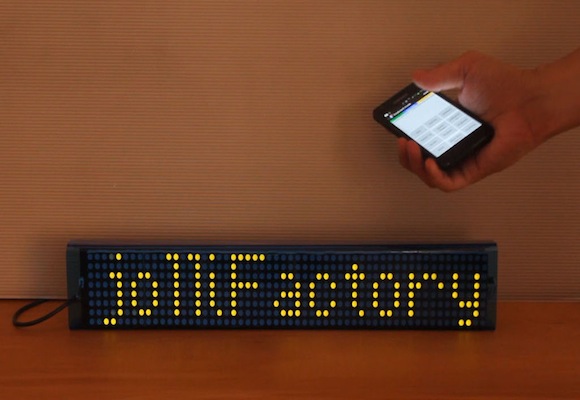I shared the details of my single-color 8X40 LED matrix display board project here a few months ago. Here is a nice instructable on making a 7 Bi-color 8×8 LED Matrix Scrolling Text Display with Bluetooth support; which means you can send messages and commands to the display via Bluetooth using a Smart Phone. The author illustrates using an Android-based phone, but any devices capable of sending text messages via Bluetooth would work.

Bi-color LED matrix with Bluetooth support
The project uses 7 Bi-color 8×8 LED matrices, each controlled by two MAX7219 chips. The beauty of using MAX7219 is they take a lot of work off the micro-controller and simplify the design. Moreover, they can be daisy chained and require only three output pins on the micro-controller for the required SPI-interface. The project is constructed using the Arduino embedded platform. In order to achieve faster speed and better scrolling effect, the author used the chipKit Uno32 board instead of the original Arduino Uno board. A HC-07 Bluetooth module is used for wireless serial communications between the display and the Android Smart Phone.









